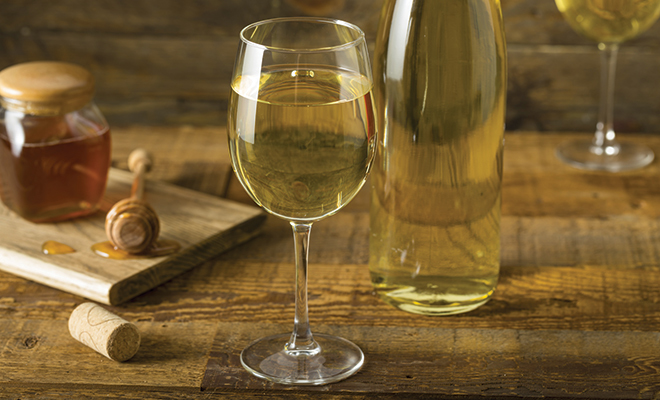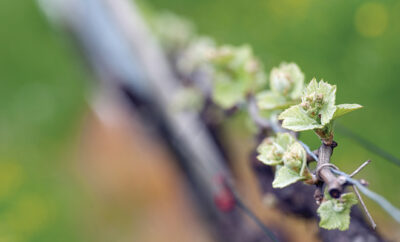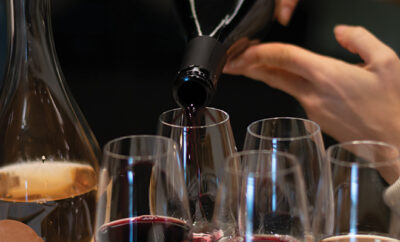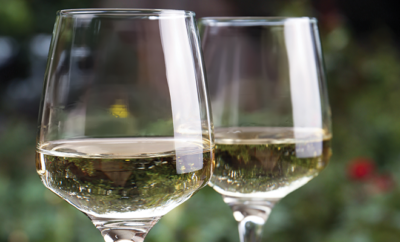
Bring on the Mead, Honey!
When I was growing up, Mead time meant it was time to go school-supply shopping for tracker-binders, folders, paper and the like. But now the remembrance of the Mead brand is, for me, identified with a golden elixir.
It was only about ten years ago that I realized there was another reason to appreciate the honey bee, and that was discovering mead, the alcoholic beverage created from fermented honey.
Honey is nature’s precious gold. Artificial sweeteners are relatively new when we consider the history of the civilizations that used Mother Nature’s own sweetener, honey. Traditional sugar was hard to come by and honey, considered valuable, has been found in sealed pots in ancient burial sites alongside chests and vases of jewels, coins and family heirlooms.
Mead could very well be the first alcoholic beverage created and enjoyed for both medicinal and celebratory occasions. Substances found in a Neolithic Chinese village in Henan Province indicate that the Chinese perfected concoctions made of seeds, rice, honey and fruit 9,000 years ago, about the same time that wine, from grapes, and beer, from barley, had their beginnings in the Middle East.
Before you think the resurgence of mead is just another hip phenomenon, think again. The slow food movement and the dedication of natural food enthusiasts to the cultivation of organic food sources have been around since the 1950s. One doesn’t have to be a beekeeper to produce mead. Gallons of honey varieties can be purchased wholesale, and local clubs across the country focus on homemade production techniques. Today’s brewmasters, winemakers and mead makers follow a long line of passionate artisans looking to create both consumable and topical natural products. Most mead recipes use distilled water and honey, and most mead makers watch their harvest just as closely as winemakers do.
Royal Jelly or Honey
Royal jelly is the mixture of honey, pollen and bee enzymes that is served only to the hive queen by the bees. The process of harvesting honey from the combs, located in the hive, creates most honey products that are in the marketplace today. The honey varieties on store shelves have been prepared for public consumption through FDA guidelines and processing. If you’re thinking of making mead yourself, your brew would not be very successful if you use this source. Mead producers use raw product along with special herbs and spices, sometimes added at the plant level so that the resulting flowers provide unique complexities for the bees to take back to the hive.
Meadery or Winery
Just as with wine grapes, it’s all about where the honey is sourced by the bee. Their terroir, if you will, varies in climate, botanicals and changing seasons, influences that make a wildflower honey different from a clover honey. Vineyards of wine grapes beautify hillsides and valleys throughout wine regions of the world. It’s visually easy to associate that lovely glass of Syrah with the grower who meticulously managed each row of grapes from spring to harvest, because we can observe the process ourselves at the winery. With mead, we may notice a few hive boxes here and there, but there are natural habitats as well that provide varying qualities of the honey that’s used to produce mead. We see the acres of vines, but not necessarily the acres of hive boxes that can be at the far reaches of a property line. Meaderies, like wineries, offer tours, tastings and retail fun.
A Mead Tasting
Imagine a light sparkling wine that is slightly golden in color. Before you sip, the floral or grassy aroma is pleasantly sweet, like a happy memory. The tip of your tongue may recognize the taste of honey, but it’s the light viscosity and finish that is most remarkable. The natural texture of honey is unmistakable.
If you have tasted mead and didn’t care for it, don’t give up. Mead varies like wine production; if you love viognier, it doesn’t necessarily mean that you’ll love chardonnay. If you wonder why you’ve not seen mead in your grocery store, it’s common to use the same holiday promotion and celebratory timing of brandy, cognac and seasonal beers. Something sweet and delicate to sip on during the cold months of winter is comforting and social.
How Do You Drink It?
Mead is lovely in a champagne flute, as it captures the floral aromas, but most often it is served and enjoyed similarly to brandy, in small quantities. To me, the international differences are extremely interesting. Mead from parts of Africa is divine, with delicate pungency in the middle of the palate, finishing with a dry, sweet smoothness. In some African countries, house mead is made and consumed regularly; it’s unique for each household recipe, with nuances that depend on the bees and honey product.
Mead has been a global delight for millennia. Expand your palate and try this golden elixir! ■
Sources: cbsnews.com, gotmead.com and seriouseats.com.







